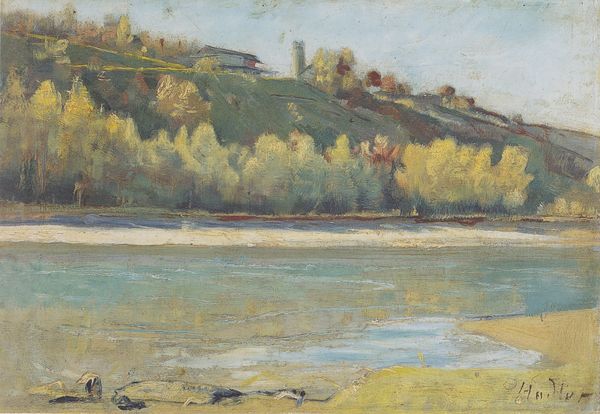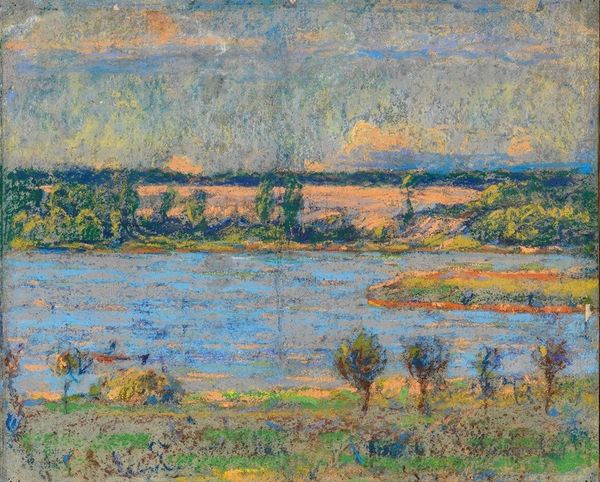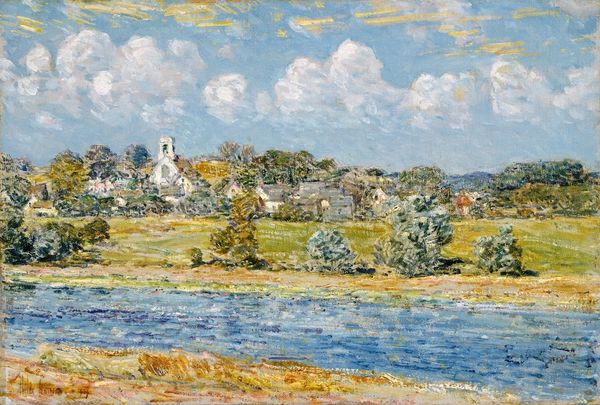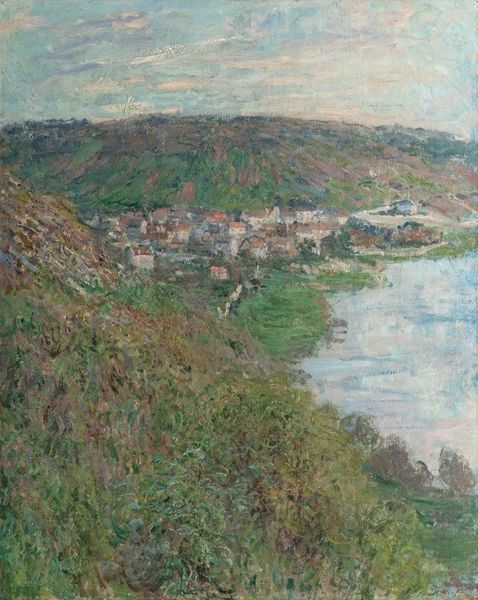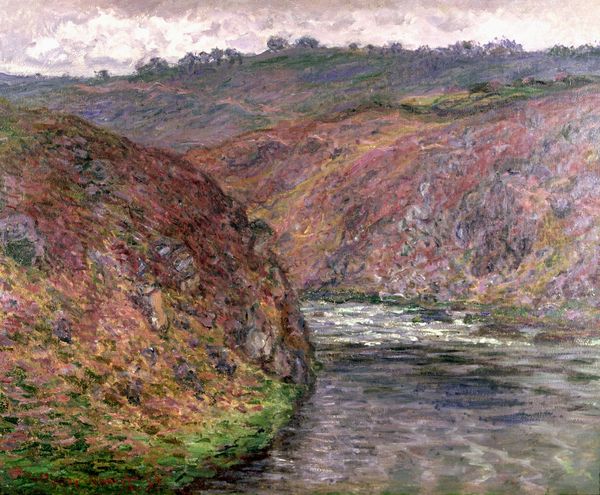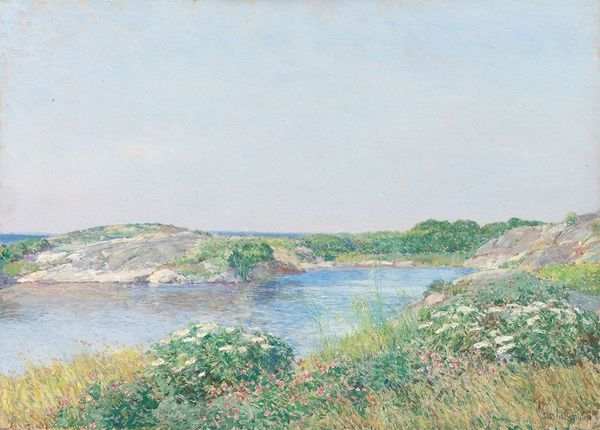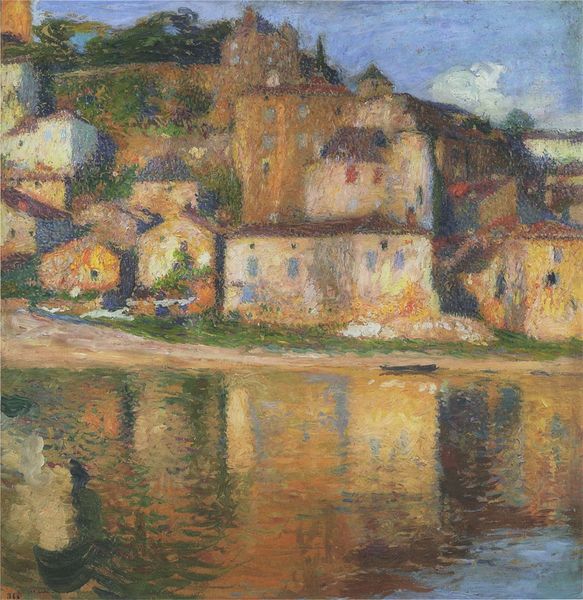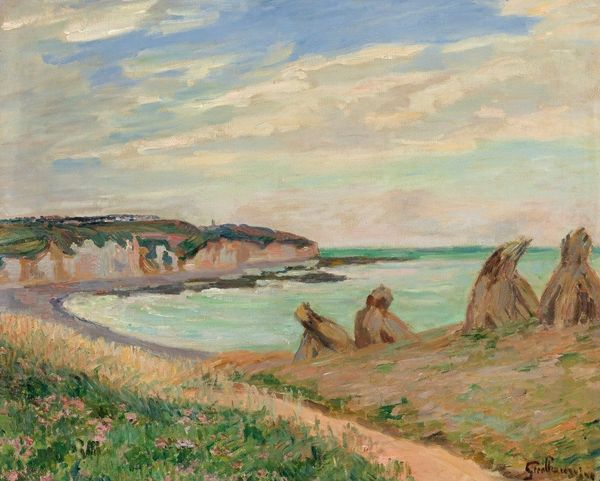
Copyright: Public Domain: Artvee
Curator: Hassam’s "Bailey’s Beach, Newport, R.I.", painted in 1901 using oil paints in the plein-air style, feels like a sun-drenched snapshot of leisure. The brushstrokes are so lively, almost like the air is shimmering. What stands out to you? Editor: I’m struck by the contrast between the rough texture of the cliff and the smoother surface of the water. Also, the everyday people seem like afterthoughts within a larger painting about place. How might the labor and materials involved tell a broader story about this piece and this moment? Curator: Well, consider the plein-air technique. Hassam hauling his materials, likely commercially produced at this point, to Bailey's Beach, signals a shift in art production and consumption. The democratization of art materials made Impressionism and its capture of the everyday possible. Are those anonymous figures on the beach participating in leisure thanks to their place within an economic strata? The rocks, the sea itself -- are they also "raw materials" to be molded, enjoyed, or exploited by society? Editor: That's a great point. So the painting itself, and the act of creating it, are tied to broader economic and social structures. What about the beach itself as a kind of material? Curator: Precisely. Bailey's Beach, a space shaped by both natural forces and human intervention, catering to a specific social class at the turn of the century. Hassam captures not just a scene, but a nexus of production, consumption, and social stratification all interacting to produce this image and moment. Does this alter your initial impression? Editor: Definitely. Seeing the painting as a product of and commentary on material conditions adds so much depth. It is much more than just a pretty picture of a beach. Curator: Exactly! It’s about understanding how art is always entangled with the materials, processes, and power dynamics of its time. A key insight for all burgeoning art historians.
Comments
No comments
Be the first to comment and join the conversation on the ultimate creative platform.
